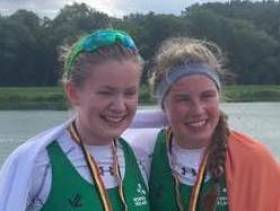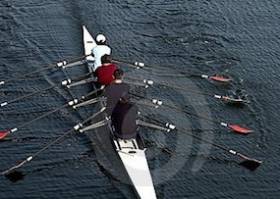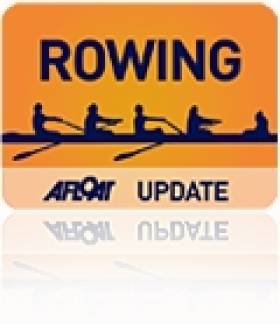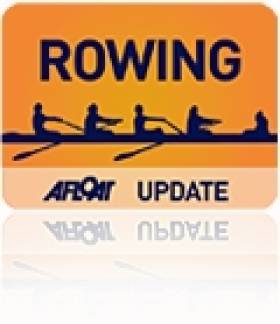Displaying items by tag: trial
A cut-short Olympic trial in the women's Laser Radial class has handed trials leader and Rio silver medalist Annalise Murphy selection for the Tokyo Olympics as Afloat reports here. News of this week's decision, however, has left two of the trialists, Aoife Hopkins and Aisling Keller, 'upset' and 'devasted' and questioning why the decision was ratified by the Irish Sailing board with the postponed Olympic Games still over a year away.
A third trialist, Irish Sailing Academy sailor Eve McMahon, says the circumstances of COVID-19 could not be foreseen and the trial, in so far as it went, was a 'tremendous experience' for her.
The remaining two Olympic trials events have been cancelled due to coronavirus and – as the four trialists were informed this week – selection has been based solely on the worlds from February, an event in which the National Yacht Club's Murphy finished 12th, well clear of her Irish rivals.
Keller of Lough Derg Yacht Club whose performance at the 2019 Australian World Championships qualified Ireland's only boat for the Tokyo Olympics so far, said she is "very surprised and upset that the remainder of the trials will not happen for the 2021 Olympics".
21-year-old Hopkins of Howth Yacht Club gave a similar reaction, "I really can’t understand the decision not to continue with the trials. I am utterly and completely devastated".
Both Hopkins and Keller were quick to take to social media to express their disappointment.
Both sailors say they were aiming to catch up in the next two trials after Murphy took the lead in the first of the three planned trials in a breezy world championships in Melbourne in February.
"Over the past few years, I’ve sacrificed a lot to fulfil my dream of becoming an Olympian. I am devastated to not even have the chance to try catch up to Annalise or Aoife over two more regattas, Keller says.
A third trialist, McMahon of Howth Yacht Club, current Gold Medal holder in the Laser Radial U17s World League after success in Canada joined the trial series at Christmas and told Afloat of the 'amazing opportunity to sail and train with the Olympic Radial Development Team'.
Read the full comments below
Team manager James O'Callaghan says "Annalise’s performance in the 2020 Worlds made her a clear favourite to win the scheduled trials. By nominating her now the Irish Sailing Board have ensured that team preparations can move focus to the Olympics rather than preparing for domestic trials”. He went on to say: “for sure this is tough on Aoife but she is still very young and can benefit massively from team training planned in Tokyo".
Murphy who returned to the Radial after failing to qualify for Tokyo in the 49erFX dinghy made an immediate impact on the Radial fleet, coming close to winning the Melbourne Worlds before finishing 12th after taking two penalties in final races.
Radial Reaction
 Aisling Keller - surprised and upset that the remainder of the trials will not happen for the 2021 Olympics
Aisling Keller - surprised and upset that the remainder of the trials will not happen for the 2021 Olympics
Aisling Keller: “On Monday I got a courtesy phone call to be informed that The Olympic spot had been given to Annalise. I am very surprised and upset that the remainder of the trials will not happen for the 2021 Olympics. Over the past few years, I’ve sacrificed a lot to fulfil my dream of becoming an Olympian. I am devastated to not even have the chance to try catch up to Annalise or Aoife over two more regattas. I was planning on doing these regattas independently i.e not with Irish sailing, as I had resigned from Irish sailing in April due to my own lack of progress and my unhappiness with how I had been treated. I would like to take this opportunity to thank all my supporters for everything over the past few years, especially everyone down in Lough Derg Yacht Club and my home town of Nenagh".
 Aoife Hopkins - taking some time out for reflection and to reassess
Aoife Hopkins - taking some time out for reflection and to reassess
Aoife Hopkins: “On Monday I was told that Irish Sailing did not intend to reschedule the remaining two trials events. I really can’t understand the decision not to continue with the trials. I am utterly and completely devastated. I am going to take some time out for reflection and to reassess. A huge amount of hard work, dedication, blood, sweat and tears went into this journey and I will use the next while to decide what direction my life will take. No matter what path I end up on, I will always be a sportswoman and an avid sailor, whether that be big boat or small! I would like to thank my family, friends and all my supporters both from within sport and the wider community, especially from my home town of Howth".
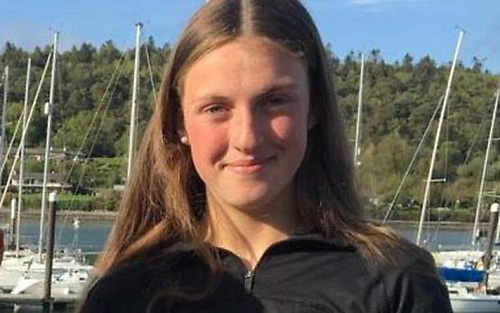 Eve McMahon - an honour and a privilege to be training alongside Annalise Murphy
Eve McMahon - an honour and a privilege to be training alongside Annalise Murphy
Eve McMahon: “I had an amazing opportunity to sail and train with the Olympic Radial Development Team. Training alongside the Olympic medallist Annalise Murphy was both an honour and a privilege for me and gave me tremendous inspiration and experience which helped me enormously during the run up to the 1st Olympic trial - Senior World Championships in Melbourne last February. The trial selection process was interrupted by the Covid 19 world pandemic, which nobody could have foreseen. Annalise was a whisker away from winning that World Championship. I fully support her selection and wish her the very best of luck in her Tokyo campaign and have great confidence that she has what it takes to bring back the gold medal for Irish sailing.”
McGirr and O'Reilly in Form at Ireland Junior Trial
#Rowing: Jack Keating of Carlow was the fastest single sculler and Ciara Browne of Workmans the fastest woman on the first day of the Ireland junior trial at the National Rowing Centre. Enniskillen crews placed first and third in the men’s pairs, while Gill McGirr and Ellie O’Reilly of Fermoy were the fastest women’s pair by over half a minute.
Under-23 Quadruple Fastest in Finals at National Rowing Centre
#Rowing: The men’s under-23 quadruple had a narrow win over the lightweight men’s four at the Ireland Trial at the National Rowing Centre in Cork today. The crew of Jack Casey, Barney Rix, Dan Buckley and Sam McKeon had .4 of a second over the lightweights in the first race in the finals session. Gary O’Donovan, in a lightweight single, won the second race. Siobhán McCrohan raced in the finals, but her selection race-off with Denise Walsh did not happen as Walsh withdrew, ill.
Ireland Trials, National Rowing Centre, Cork (Selected Results; Per Centage of Projected World Best Time for this boat)
Saturday – Men, Junior, Pair – Time Trial: 1 Presentation, Cork A (O’Keeffe, Kennelly) 7 mins 41.8 sec (85.53 per cent), 2 Portora (Armstrong, Johnston) 7:42.3 (85.44), 3 St Michael’s A (B McKeon, T McKeon) 7:44.4 (85.07). A Final: 1 Armstrong, Johnston 8:32.2 (77.12), 2 McKeon, McKeon 8:39.7 (76.0), 3 O’Keeffe, Kennelly 8:43.8 (75.41).
Single Sculls – Time Trial: 1 D Lynch 7:59.9 (86.26), 2 R Byrne 8:03.2 (85.68), 3 D Mitchell 8:12.1 (84.13). A Final: 1 Lynch 8:35.6 (80.29 per cent), 2 Byrne 8:40.9 (7i.48), 3 Mitchell 8:53.6 (77.59). B Final: F O’Sullivan 8:50.8 (77.99).
Women – Junior – Pair – Time Trial: 1 Cork A (Mason, Hanlon) 9:05.2 (79.97), 2 Methodist A (McIntyre, McBrinn) 9:22.5 (77.51), 3 Portora (Kelly, Elliott) 9:24.4. A Final: Mason, Hanlon 9:21.3 (77.67), 2 McIntyre, McBrinn 9:35.9 (75.7), 3 Shannon (Tully, Carmody) 9:40.5 (75.11), 4 Kelly, Elliott 9:40.8 (75.07). B Final: Shandon/Lee (Heaney, Kovacs) 9:43.4 (74.74).
Single Sculls – Time Trial: 1 H Scott 9:03.7 (83.5), 2 E Hegarty 9:04.8 (83.33), 3 A Casey 9:11.9 (82.26). A Final: 1 Hegarty 9:37.7 (78.59), 2 Scott 9:47.7 (77.25), 3 Casey 10:00.1 (75.65). B Final: F Chestnutt 10.02.9 (75.3).
Sunday – Senior, Under-23 and Junior Time Trial (men unless stated; selected results): 1 Lightweight Four 6:39.9 (85.03), 2 Under-23 Quadruple 6:39.9 (82.52), 3 Junior Double (Byrne, Lynch) 7:21.3 (86.1); 5 Lightweight Single (G O’Donovan) 7:43.2 (85.9), 6 Jun Pair (Armstrong, Johnston) 7:50.6 (83.94); 8 Jun Women’s Double (Hegarty, Scott) 8:10.4 (85.65); 10 Women’s Pair (B O’Brien, L Kennedy) 8:17.4 (81.21), 11 Women’s Single (S Puspure) 8:18.2 (85.3), 11 Jun Single (D Mitchell) 8:20.5 (82.72), 13 Women’s University Single (M Dukarska) 8:37.1 (82.18), 14 Women’s Lightweight Single (S Jennings) 8:54.3 (81.98), 15 Jun Women’s Pair (Mason, Hanlon) 8:58.1 (81.03).
Finals – Race One: 1 U-23 Quad 6:29.4, 2 Light Four 6:29.8, 3 Junior Double 7:05.1. Race Two: Light Single (G O’Donovan) 7:26.2, 2 Jun Pair 7:34.5, Jun Women’s Eight 7:35.6, 4 Lightweight Women’s Single (S McCrohan) 8:29.2. Race Three: Lightweight Men’s Single (C Beck) 7:50.7, 2 Light Single (D O’Connor) 7:52.7, 3 Jun Women’s Double 7:53.7, 4 Puspure 8:00.4. Race Four: 1 Dukarska 8:17.4, 2 Jennings 8:20.2, 3 Jun Women’s Pair (Mason, Hanlon) 8:35.2.
Should Results From the Women's Olympic Radial Trial Be Based on Female Participation Only?
The second Olympic Women's Laser Radial trial in Miami is looming but it looks like there were some unexpected implications from December's first trial between Annalise Murphy and Aoife Hopkins in Rio because men were racing with women in the Radial class at the Copa Bresil de Vela regatta writes Water Rat.
In the race for the single Irish berth at this year's Olympics, the Irish Sailing Association currently rank Murphy as leading the Olympic trial ahead of Hopkins. There is no doubt that Hopkins was well beaten, no matter what way you read it. They all sailed off the same start, with the same competitors. But whether she was beaten by 10 boats (women only) or by 13 boats (men and women) could become significant in the event of closer racing in the next trials at Miami on January 25th and Mexico.
Should the results not be based on female participation only?
If the answer is negative, perhaps Hopkins should make an appeal immediately so that the issue can be sorted before this month's second Miami based trial in ten days time. In the absence of any appeal procedures on the ISA website, Water Rat looked over the race documents from Copa de Brazil and makes the following observations:
In NOR 3.3 there are 2 separate competitions the Copa Bresil de Vela and the Copa Bresil de Vela Jovem (Youth)
The Irish Girls were competing in the Copa Brasil Laser Radial (W) class.
In the youth event there were both men and womens categories in the Laser Radial.
NOR 5.1.2 states:
For Olympic classes the regatta will consist of an opening series followed by a Medal Race as per item 5.2. Youth classes Laser Radial and RS:X will be grouped with their Olympic class on a single starting sequence, course and overall results and for Medal Race criteria will be considered as one single class.
NOR 16.1 states that prizes will be awarded to the top 3 boats in each class.
NOR 16.2 reads :
16.2 In Youth classes Laser Radial (Male and Female) and RS:X (Male and Female) the top 3 boats will be defined by the better three boats in the overall results grouped with the Olympic classes
According to the results Aoife was considered to be sailing in the Youth event.
The ISA trial regulations (as quoted) state:
Points shall be awarded to the Candidate in each Trial Regatta exactly corresponding to that Candidate’s final overall placing in that Trial Regatta as shown on the official final results sheet published by the regatta organisers. For example, an overall first place shall score one point; a second place shall score two points and so on
Conclusions
1. It could be argued that Annalise and Aoife were not sailing in the same class nor even in the same event! In this case Annalise finished 14th in the Copa Bresil de Vela 2015 Laser Radial Class (W) and Aoife finished 3rd in the Laser Radial (W) in the Copa Bresil de Vela Jovem 2015. In which case the results of this event cannot provide significant information to select a sailor for the Olympics.
2. It could also be argued that both sailors were competing in the Olympic Women's Single-handed Class (for which the trial is designed to select the Irish competitor) which excludes male competitors but not those under 19 . In which case Annalise finished 14th and Aoife 24th.
3 Finally, a strict reading of the ISA regulations places Annalise 15th and Aoife 28th as per the results provided by the event.
4. The intention of the event organisers to sail and score all the Laser Radial classes as one class was clearly signalled in the NOR. It is the responsibility of the competitors to read the NOR and raise any objection before or during the event. However, in this case it would seem that the trial organisers may equally have failed to fully appreciate the implications of the NOR for the trials?
Ireland Rowing Trial Cancelled
#Rowing: The Ireland trials set for this weekend have been cancelled. Weather conditions at the National Rowing Centre in Cork would not have been suitable. The athletes set to compete will next trial at the Irish Indoor Rowing Championships in Limerick on January 23rd. The weights allowed will 73kg for lightweight men and 59.5 kg for lightweight women, which are those carried forward from the proposed December trial.
Confusion Over Murphy's Results, Lynch Leads Irish Olympic Laser Mens Trial After Day One in Rio
Offical results from the first rounds of the Irish Olympic Sailing Laser Trials in Brazil appear to show an inauspicious start for Annalise Murphy at Ill Copa Brazil de Vela. According to the official scoresheet (downloadable below), Murphy 'did not compete' in the first day of competition yesterday and is recorded in last place but the Irish Sailing Association (ISA) say this is not the case.
Murphy did race yesterday and the DNCs shown on the scoresheet are the result of a 'scoring error', according to the ISA. Irish team manager James O'Callaghan says Annalise scored 'about a 20 and 13'. The official results have yet to be updated by organisers to reflect this position.
Howth Yacht Club 17–year–old Aoife Hopkins who is contesting the single irish Rio place scored a 28 and a 20 in the opening races to be 23rd overall in the 38–boat fleet.
Racing starts today So excited ! Proud to be part of team CH Marine and ISA Performance Youth Academy
Posted by Aoife Hopkins Sailing on Tuesday, 15 December 2015
Winds were light, below ten knots, for the first day of competition at the Ill Copa Brzail de Vela venue.
At the top of the women's fleet, the world's top Radial sailors occupy the first three places with Evi Van Acker of Belgium leading on six points, Holland's Marit Boumeester one point behind in second place and Danish champion Anne–Marie Rindom third.
In the mens division, a 19 and 30 scored in the 46–boat fleet puts the National Yacht Club's Finn Lynch in 21st overall and eleven places clear of Fionn Lyden of Schull Harbour Sailing Club in 32nd with Belfast's James Espey in 36th place. Download results below.
Racing continues today with eight more races left to sail. The Irish 49er and 49erfx skiff crews are also competing.
Irish Olympic Sailing Laser Trials Under Way in Rio
In spite of qualifying the nation for Rio 2016, both London 2012 Laser sailors Annalise Murphy and James Espey face a test for their Olympic places on Rio waters this afternoon. The first of three Irish Olympic sailing trials begins at Copa Brasil De Vela regatta and three young Irish pretenders (from an earlier possible shortlist of eight) seek to unseat Murphy and Espey for the two Rio berths available.
In the Womens Laser Radial class, Aoife Hopkins threw down the gauntlet to Irish sailing sensation Murphy a month ago. The Howth Yacht Club backed 17–year–old declared for the Radial trial in an ambitious campaign that's ultimate aim is a medal in Tokyo 2020.
In the mens division, Belfast's Espey comes up against ISAF silver medalist Finn Lynch and West Cork's Fionn Lyden. At one stage there was arguably two more would be contenders but both Seafra Guilfoyle of Royal Cork and Daragh O'Sullivan of Kinsale ruled themselves out of the costly trials series. The build up to the trials has not been without its own drama when the National Yacht Club's Lynch dislocated a shoulder a month ago.
Hanging around waiting for wind?
Posted by James Espey Sailing on Monday, 14 December 2015
Both mens and womens Laser divisions will race ten races with a single discard on the Olympic waters and the forecast is for winds of less than eight knots after some stormy weekend weather.
Racing begins at 1pm local time, two hours behind GMT. The NOR is downloadable below.
The Irish Sailing Association coach Rory Fitzpatrick and the ISA's Olympic Sailing Group member Trevor Millar, (who is Founder and Executive Director of the Laser coaching service, Sailcoach Ltd ) are monitoring the Irish trial.
Despite strong winds and rain that hammered Rio at the weekend the race progamme is going ahead without amendments, even though there a reports of increased pollution in the bay.
The competiton runs until 20 December and will be based in San Francisco beach in Niteroi, and will be used used by the host nation to fill the remaining spots of the Brazilian Sailing Team in the Olympics.
An event website is here with no entry list available. Twitter followers are using # vempravela #agoraébra.
After Copa Brasil de Vela, the Irish trial continues with the 2016 ISAF Sailing World Cup Miami, and the 2016 Laser Radial World Championships (Women) and the 2016 Laser World Championships (Men).
Kennedy and O'Brien Win Women's Pair Trial
# Rowing: Leonora Kennedy and Barbara O’Brien won the women’s pair final at the Ireland trial at the National Rowing Centre, beating the combination of Monika Dukarska and Aifric Keogh. Michael Maher, a former lightweight international, competed in the heavyweight single and won that final. Paul O’Donovan was the convincing winner of the lightweight single, while his brother and partner in the lightweight double, Gary, was second, 19 seconds back. Sanita Puspure won her heat of the heavyweight single convincingly and was exempted from having to compete in a final.
Ireland Trial, National Rowing Centre, Cork, Sunday (Selected Results; Finals unless stated):
Men
Pair: UCD 7:21.23.
Single Sculls: 1 M Maher 7:56.61, 2 S McKeown 7:59.18, 3 R Byrne 8:02.46
Lightweight Single: 1 P O’Donovan 7:22.63, 2 G O’Donovan 7:41.77, 3 S O’Driscoll 7:48.99.
Women
Pair: 1 L Kennedy, B O’Brien 8:10.35, 2 M Dukarska, A Keogh 8:19.19.
Single Sculls – (Heat): S Puspure 7:50.46. Under-23: 1 E Hegarty 8:56.88, 2 E Lambe 9:11.60, 3 M Cremin 9:16.75.
Lightweight Single: 1 C Lambe 8:17.22, 2 Sarah Dolan 8:26.55, 3 D Walsh 8:27.77.
| Rowing Ireland - October Trials - Result of Finals |
| 12:30 |
| W2- |
| Final |
| 1 |
| Portora/UCC |
| 8:10:35 |
| 2 |
| Killorglin/UCC |
| 8:19:19 |
| 12:35 |
| WB1X |
| Final B |
| 1 |
| Lee - Synnott |
| 9:18:23 |
| 3 |
| UCC - O'Sullivan |
| 9:33:98 |
| 2 |
| Lee - Littlewood |
| 9:39:52 |
| 12:40 |
| WB1X |
| Final A |
| 1 |
| Skibbereen - Hegarty |
| 8:56:88 |
| 3 |
| UCD - Lambe |
| 9:11:60 |
| 2 |
| Lee - Cremin |
| 9:16:75 |
| 4 |
| Belfast - Blundell |
| 9:28:03 |
| 12:45 |
| M1X |
| Final C |
| 2 |
| Fermoy - Morrison |
| 8:16:64 |
| 3 |
| Shandon - O'Sullivan |
| 8:21:23 |
| 1 |
| Killorglin - Crowley |
| 8:21:81 |
| 4 |
| Portadown - Laivins |
| 8:51:18 |
| 12:50 |
| M1X |
| Final B |
| 2 |
| UCD - Hughes |
| 7:58:71 |
| 1 |
| UCC - Casey |
| 8:01;91 |
| 3 |
| Castleconnell - Whittle |
| 8:09:53 |
| 4 |
| Lee - Larkin |
| 8:13:00 |
| 12:55 |
| M1X |
| Final A |
| 3 |
| Commercial - Maher |
| 7:56:51 |
| 4 |
| Portadown - McKeown |
| 7:59:18 |
| 2 |
| Shandon - Byrne |
| 8:02:46 |
| 1 |
| OCBC - Neale |
| DNF |
| 13:05 |
| MS2- |
| Final |
| 0 |
| UCD 2- |
| 7:21:23 |
| 13:05 |
| WL1X |
| Final |
| 3 |
| OCBC - Lambe |
| 8:17:72 |
| 1 |
| Commercial - Dolan |
| 8:26:55 |
| 4 |
| Skibbereen - Walsh |
| 8:27:77 |
| 2 |
| Tribesman - McCrohan |
| 8:46:96 |
| 0 |
| Belfast - Quinn |
| 8:54:04 |
| 13:10 |
| LM1X |
| Final D |
| 1 |
| Cork - O'Connell |
| 8:08:19 |
| 3 |
| Skibbereen - Ryan |
| 8:09:69 |
| 2 |
| Shandon - Merz |
| 8:13:87 |
| 4 |
| Shandon - Channon |
| 8:20:34 |
| 13:15 |
| LM1X |
| Final C |
| 2 |
| Shandon - Prendergast |
| 7:59:09 |
| 1 |
| Shandon - Lonergan |
| 8:09:78 |
| 4 |
| UCC - Synnott |
| 8:16:14 |
| 3 |
| Skibbereen - McCarthy (J) |
| 8:21:42 |
| 13:20 |
| LM1X |
| Final B |
| 1 |
| St Michael's - O'Connor |
| 7:52:90 |
| 2 |
| Shandon - Hennessy |
| 7:57:56 |
| 3 |
| NUIG - Keane |
| 7:58:49 |
| 4 |
| Waterford - Goff |
| 8:01:08 |
| 13:25 |
| LM1X |
| Final A |
| 1 |
| Skibbereen - O'Donovan (P) |
| 7:22:63 |
| 2 |
| Skibbereen - O'Donovan (G) |
| 7:41:77 |
| 3 |
| Skibbereen - O'Driscoll |
| 7:48:99 |
| 4 |
| Skibbereen - McCarthy (F) |
| 8:00:48 |
Jennings Tops Rankings at Ireland Trial
#ROWING: Sinéad Jennings topped the ranks of lightweight women at the first Ireland trial at the National Rowing Centre in Cork today. The St Michael’s woman took first from Siobhán McCrohan in the final, with Denise Walsh third. Claire Lambe, who was second to Jennings in the heats, just pipping McCrohan, pulled out of the final with an injury niggle.
Lisa Dilleen won the heavyweight women’s single sculls heat from Sanita Puspure, but Puspure won the final. Leonora Kennedy and Helen Hannigan (Walshe) were excused for being ill.
In the lightweight single sculls, Paul O’Donovan won from his brother Gary, who was 5.82 seconds slower. In the lightweight men’s pairs, Mark O’Donovan and Niall Kenny won well.
In the heavyweight single, Dave Neale won the time trial, but pulled out ill from the final, which was won by Turlough Hughes.
Lightweight Rowers Top Rankings at Ireland Trial
#ROWING: Irish rowing grabbed a few hours of relative calm between spells of gusting wind to stage the second session of the Ireland Trial at Newry Canal today. Lightweight single sculler Siobhán McCrohan (26) again topped the overall rankings – bettering her per centage of projected world gold medal winning time set on Saturday.
Paul O’Donovan and Sanita Puspure also confirmed their good form, with O’Donovan teaming up to good effect with Shane O’Driscoll in a lightweight double scull. One of the most encouraging aspects of the weekend was the evidence of a breadth of talent in the lightweight men’s category – Anthony English did well today, and Niall Kenny was not far behind.
Ireland Trial, Newry Canal (Run over 5km; Selected Results)
(Percentage is of projected world gold medal winning time)
Saturday
Men
Pair – Senior: 1 D Neale, C Folan 18 minutes 41.53 seconds (82.03), 2 D Power, P O’Connell 18:53.62 (81.6). Under-23: 1 R O’Callaghan, R Bennett 18:29.53 (82.92), 2 M Pukelis, K Neville 19:23.43 (79.08). Junior: D Keohane, B Keohane 19:06.58 (80.24), 2 Murphy, O’Connell 19:26.23 (78.89), 3 Fallon, Bennett 19:32.47 (78.47).
Lightweight: 1 Quinlan, O’Connor 19:27.59 (81.36), 2 McKenna, Murphy 19:30.72 (81.15), 3 Keane, Breen 19:32.55 (81.02).
Sculling,
Single – Senior: 1 J Keohane 19:16.47 (84.31), 2 A McEvoy 19:37.34 (82.81). Under-23: 1 T Oliver 19.47.82 (82.08), 2 A Harrington 19:52.47 (81.76), 3 S McKeown 20:06.03 (80.84). Junior: 1 D O’Malley 19:41.55 (82.5), 2 C Carmody 19:57.29 (81.43), 3 C Hennessy 20:15.6 (80.21).
Lightweight – Senior: 1 N Kenny 19:18.40 (86.33), 2 J Ryan 19:28.13 (85.61), 3 M O’Donovan 19:30.07 (85.46). Under-23: P O’Donovan 19:05.46 (87.3), 2 S O’Driscoll 19:26.18 (85.75), 3 C Beck 19:41.35 (84.65).
Women
Four – Senior: Deasy, McCarthy, O’Brien, Leahy 19:51.76 (84.33).
Pair – Senior: L Dileen, A Keogh 20:12.32 (84.14), 2 Bennett, Gilligan 21:28.79 (79.14). Under-23: G Collins, O Finnegan 21.05.13 (80.62). Junior: 1 K O’Connor, H Hickey 21:43.08 (78.28), 2 Clarke, Glover 21:54.75 (77.58), 3 Nagle, O’Keeffe 22:33.06 (75.38).
Sculling
Single – Senior: 1 S Puspure 20:21.36 (86.99), 2 M Dukarska 2:40.57 (85.65), 3 E Moran 21:20.92. Under-23: 1 C Fitzgerald 21.50.12 (81.10), 2 H O’Sullivan 22:14.21 (79.64), 3 M Dineen 22:27.69 (78.84). Junior: 1 E Lambe 21:47.62 (81.25), 2 J English 21:54.17 (80.85), 3 E Barry 22:03.17 (80.30).
Lightweight – Senior: 1 S McCrohan 20:58.15 (87.43), 2 C Jennings 21:15.24 (86.26), 3 O Hayes 21:18.60 (86.03). Under-23: 1 R Morris 21:32.68 (85.09), 2 S Horgan 21:47.18 (84.15).
Sunday
(Provisional Results)
Overall (ranked on per centage of projected world gold medal time): 1 S McCrohan (lightweight senior single scull) 2o:50.49 (87.97), 2 P O’Donovan, S O’Driscoll (lightweight under-23 double) 17:26.91 (87.40), 3 S Puspure (women’s senior single) 20:17.63 (87.26), 4 A English (lightweight senior single) 19:13.24 (86.71), 5 M Dukarska, E Moran (women’s senior double) 19:02.81 (86.63), 6 N Kenny (lightweight single) 19:18.26 (86.34).
Men
Pair, Senior: 1 Coughlan, Buckley 19:02.79 (80:50), 2 Neale, Folan 19:08.71 (80.09). Under-23: 1 O’Callaghan, Bennett 18:34.83 (82.52), 2 Power, O’Connell 18:44.47 (81.82), 3 M Pukelis, K Neville 19:13.78 (79.74). Junior: 1 Keohane, Keohane 19:04.69 (80:37), 2 Fallon, Bennett 19:20.32 (79.29), 3 Murphy, O’Connell 19:21.50 (79.21).
Lightweight, Senior: 1 Prendergast, O’Donovan 18:35.31 (85.18), 2 Ryan, Griffin 18:38.23 (84.96), 3 McKenna, Murphy 19:05.94 (82.90). Under-23: 1 Hegarty, Ryan 19:24.87 (81.55), 2 Keane, Breen 19:25.40 (81.52).
Sculling, Double – Under-23: 1 T Oliver, C Beck 18:06.94 (82.57).
Lightweight, Under-23: O’Donovan, O’Driscoll 17.26.91 (87.40)
Single – Senior: 1 Keohane 19:05.78 (85.09), 2 A McEvoy 19:27.84 (83.49), 3 A Bolger 20:52.45 (77.85). Under-23: 1 A Harrington 19:29.92 (83.34), 2 S McKeown 20:03.43 (81.02), 3 A Boreham 20:57.27 (77.55). Junior: 1 O’Malley 19:29.80 (83.35), 2 Carmody 19:55.68 (81.54), 3 A Gough 20:12.44 (80.42).
Lightweight, Senior: 1 A English 19:30.24 (86.71), 2 N Kenny 19:18.26 (86.34). Under-23: 1 D Quinlan 19:54.86 (83.69), 2 S O’Connor 20:05.94 (82.92)
Women
Pair – Senior: 1 Dilleen, Keogh 20:00.78 (84.94), 2 M O’Neill, E Tormey 20:30.55 (82.89). Under-23: Fitzgerald, Dinneen 21:33.47 (78.86). Junior: 1 O’Connor, Hickey 21:36.52 (78.67), 2 Wray, Morelli 21:41.98 (78.34), 3 Clarke, Glover 22.11.23 (76.62).
Double – Senior: Dukarska, E Moran 19:02.81 (86.63)
Sculling, Single – Senior: Puspure 20:17.63 (87.26). Under-23: 1 H O’Sullivan 22:16.18 (79.52), 2 B Walsh 22:35.91 (78.36)
Junior: 1 J English 21:23.36 (82.79), 2 E Lambe 21:27.12 (82.55), 3 E Hegarty 21:37.89 (81.86).
Lightweight – Senior: 1 McCrohan 20:50.49 (87.97), 2 O Hayes 21:14.15 (86.33), 3 C Jennings 21:19.10 (86.00). Under-23: 1 R Morris 21:37.26 (84.79), 2 S Horgan 22:10.68 (82.66)



























